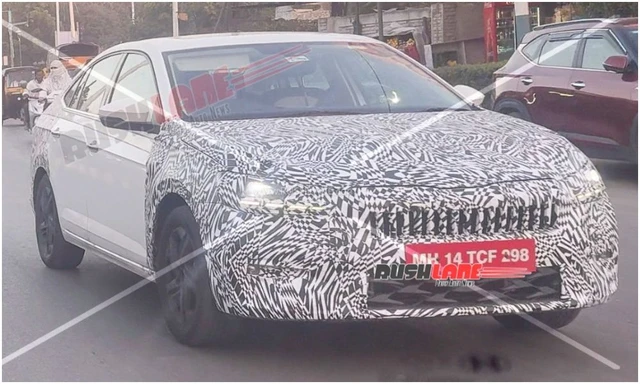Need For Speed: What Makes Formula One Cars So Fast?

- F1 cars have high top speed because of downforce and grip
- F1 cars can reach a top speed of 240 MPH
- Aerodynamic looks and high-performance engines define F1 cars
To give you a little perspective on the speed these cars clock, just recently in Melbourne in 2019, a car clocked a lap time of 1 minute and 25 seconds. This means that the car covered just over 5 kilometres in less than one and a half minutes.
A modern Formula 1 car goes from 0 to 60 MPH in less than 2 seconds and can reach a top speed of 240 MPH. The G forces a Formula 1 driver experience is more than what astronauts experience during a shuttle launch.
So what features of Formula One cars make them so fast? Let's dive in and have a look!

Photo Credit: www.formula1.com
Aerodynamics
These cars don't just have powerful engines; they also go lightning fast on the corners because aerodynamics play's a role in their movement. Aerodynamics, in a nutshell, means the effect of air on an object and its analysis. It is a known fact that teams allocate up to 20% of their budgets on the aerodynamics of their cars. Aerodynamics are essential because they generate downforce, which means that the cars get pulled into the ground. More downforce means more grip on the ground, and cars can turn quicker on turns, leading to faster lap times.

Photo Credit: www.marca.com
The Wings
The front part of the F1 car is responsible for 40% of the downforce that a car generates. It is naturally the first part that comes into contact with air at high speeds, and it is designed in a way (upside down) to ensure that the car gets stuck to the ground rather than flying off. The wings also make the car move faster.
Optimization
The downforce in a Formula 1 car has to be adjusted with the track type. With the change in tracks, the teams' strategy and car's features change. On tracks where there are more turns, such as the Singapore circuit, the teams alter the features of their car to create more downforce, which allows the car to take more turns and at faster speeds to reduce lap times.
On a circuit like Monza, where there are fewer turns, the teams reduce the features and alter the car to create lesser downforce to go faster on straight stretches.
The Engine
The engine of an F1 car is typically sized like the one in a passenger car, but it is much more powerful. These cars use short-stroke engines, and their cylinder looks like a honey puck. This shape allows the engine to take in more air and fuel with short strokes for the engine pistons. This allows a lot more efficiency.

Photo Credit: twitter.com
The Gearbox
Did you know that the F1 cars have semi-automatic gearboxes? The gearboxes are automated, but the drivers use the clutch while starting the car and change the gears themselves. These gears are mounted on the back of the steering wheel, and engaging them at the correct times requires a lot of skill.
Trending News
Latest News
 car&bike Team | Dec 14, 2025Top-Spec Tata Sierra Accomplished, Accomplished+ Prices RevealedRegardless of the powertrain combination chosen, all Tata Sierra Accomplished+ trims cost upwards of Rs 20 lakh (ex-showroom).2 mins read
car&bike Team | Dec 14, 2025Top-Spec Tata Sierra Accomplished, Accomplished+ Prices RevealedRegardless of the powertrain combination chosen, all Tata Sierra Accomplished+ trims cost upwards of Rs 20 lakh (ex-showroom).2 mins read car&bike Team | Dec 13, 2025Skoda Slavia Facelift Spied Testing Again Ahead Of DebutThe facelifted Slavia is expected to debut in 2026 as Skoda-VW India looks to refresh its India 2.0 range.1 min read
car&bike Team | Dec 13, 2025Skoda Slavia Facelift Spied Testing Again Ahead Of DebutThe facelifted Slavia is expected to debut in 2026 as Skoda-VW India looks to refresh its India 2.0 range.1 min read car&bike Team | Dec 13, 20252026 MG Hector Facelift Interior Previewed Ahead Of DebutLatest teaser video of the upcoming Hector facelift suggests minimal cosmetic changes to the interior as well as reveals a new alloy-wheel design.1 min read
car&bike Team | Dec 13, 20252026 MG Hector Facelift Interior Previewed Ahead Of DebutLatest teaser video of the upcoming Hector facelift suggests minimal cosmetic changes to the interior as well as reveals a new alloy-wheel design.1 min read Jaiveer Mehra | Dec 13, 2025Passenger Vehicle, Two-Wheeler Sales Surge In November 2025: SIAMBoth segments reported a growth in the region of 20 per cent, though year-to-date sales growth in FY2026 was notably flatter at around 3 per cent.1 min read
Jaiveer Mehra | Dec 13, 2025Passenger Vehicle, Two-Wheeler Sales Surge In November 2025: SIAMBoth segments reported a growth in the region of 20 per cent, though year-to-date sales growth in FY2026 was notably flatter at around 3 per cent.1 min read car&bike Team | Dec 12, 2025Nissan Entry MPV Design To Be Unveiled On December 18New MPV to be the first of three new models for India by Nissan, alongside the Tekton and a three-row SUV.1 min read
car&bike Team | Dec 12, 2025Nissan Entry MPV Design To Be Unveiled On December 18New MPV to be the first of three new models for India by Nissan, alongside the Tekton and a three-row SUV.1 min read Jaiveer Mehra | Dec 12, 2025New Mini Convertible Launched At Rs 58.50 LakhDrop-top variant of the iconic Cooper hatchback available in a single Cooper S spec.1 min read
Jaiveer Mehra | Dec 12, 2025New Mini Convertible Launched At Rs 58.50 LakhDrop-top variant of the iconic Cooper hatchback available in a single Cooper S spec.1 min read
 Janak Sorap | Dec 11, 2025Harley-Davidson X440 T First Ride Review: Smarter and SharperHarley-Davidson has taken the X440 and given it a more focused and engaging twist. The result is the X440 T—essentially the same platform but updated in areas that give the motorcycle more appeal and riders more thrill.5 mins read
Janak Sorap | Dec 11, 2025Harley-Davidson X440 T First Ride Review: Smarter and SharperHarley-Davidson has taken the X440 and given it a more focused and engaging twist. The result is the X440 T—essentially the same platform but updated in areas that give the motorcycle more appeal and riders more thrill.5 mins read Shams Raza Naqvi | Dec 10, 20252025 Mini Cooper Convertible Review: More Colour On Indian RoadsThe updated Mini Cooper Convertible is set to be launched in the Indian market in the next few days. We drive it around Jaisalmer for a quick review.1 min read
Shams Raza Naqvi | Dec 10, 20252025 Mini Cooper Convertible Review: More Colour On Indian RoadsThe updated Mini Cooper Convertible is set to be launched in the Indian market in the next few days. We drive it around Jaisalmer for a quick review.1 min read Bilal Firfiray | Dec 8, 2025Tata Sierra Review: India’s New Favourite?Marking its return after a few decades, the reborn Sierra has made everyone sit up and take notice. But is it worth the hype?10 mins read
Bilal Firfiray | Dec 8, 2025Tata Sierra Review: India’s New Favourite?Marking its return after a few decades, the reborn Sierra has made everyone sit up and take notice. But is it worth the hype?10 mins read Girish Karkera | Dec 4, 20252026 Honda Prelude First Drive: Domesticated Civic Type RA sporty-looking coupe built to give customers a taste of performance but not at the expense of everyday practicality.5 mins read
Girish Karkera | Dec 4, 20252026 Honda Prelude First Drive: Domesticated Civic Type RA sporty-looking coupe built to give customers a taste of performance but not at the expense of everyday practicality.5 mins read Seshan Vijayraghvan | Nov 29, 2025Mahindra XEV 9S First Drive Review: Big Electric SUV, Bigger ExpectationsThe XEV 9S lands at a time when the EV crowd is growing fast. It’s a big, born-electric, three-row SUV that starts under 20 lakh. It sits close to the XUV700 in size, but the brief is very different. Here’s what it’s like on the road.11 mins read
Seshan Vijayraghvan | Nov 29, 2025Mahindra XEV 9S First Drive Review: Big Electric SUV, Bigger ExpectationsThe XEV 9S lands at a time when the EV crowd is growing fast. It’s a big, born-electric, three-row SUV that starts under 20 lakh. It sits close to the XUV700 in size, but the brief is very different. Here’s what it’s like on the road.11 mins read

































































































































